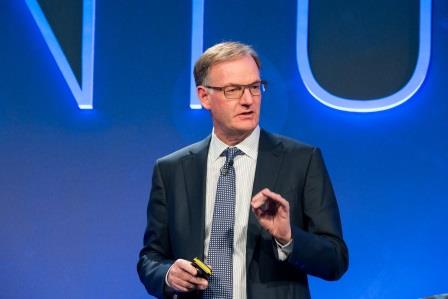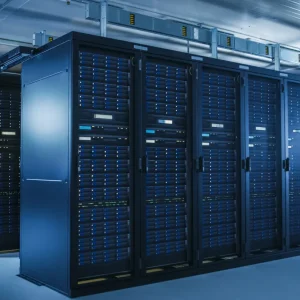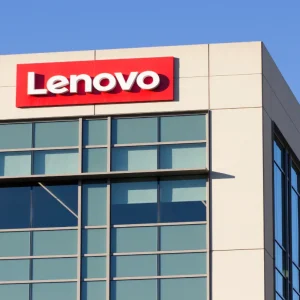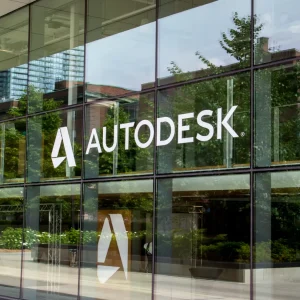
CBRonline: Do you expect to see a shake – out in the flash market. Will all flash players get bought up or go out of business?
David Goulden, CEO EMC Storage Business: When you see these inflection points, and the move to all flash primary storage is an inflection point, when these things occur, there is a spurt of innovation and you see a lot of people get into the market. Inevitably a number of those who come into a particular market don’t make it. Usually one or maybe two might break through and become a vendor. Obviously it is tougher these days because the IPO market has dried up a little bit so it is tougher for financing. So there is a double issue, not everyone makes it and secondly, one of the methods that people use to finance their growth efforts is not there for now. You can look at inflection after inflection in industry the results are constant. Infections, which are good things, bring new technologies and keep firms like us on our feet. We’ve been very successful with Xtremio with 40% market share in all the flash market and we think with these announcements there is room to expand that.
CBR: As part of its new announcements EMC is changing its maintenance terms and offering to replace drives. EMC is offering maintenance on the life of drives and a fixed maintenance price. Is this because the market has concerns about all flash technology?
DG: This is us out in front leading. Think in terms of paradigm shift. This is not your father’s Vmax, this is not your father’s EMC. We want to be very proactive. We want to let our customers invest with confidence. One thing that’s very important to understand we’re doing differently with Vmax 3. Historically if you buy a Vmax, you basically get three years of hardware maintenance with it and then you go on. With the all flash Vmax, we’ve gone to more of an appliance approach. We’ve broken out the hardware and software maintenance out. Day one you start paying maintenance and it’s a fixed per centage of the purchase price. We are saying that whatever that percentage is it will stay as set. And customers can invest in confidence that whatever they’re buying won’t wear out and if it does we’ll replace it. We’re confident it won’t. We wouldn’t give a guarantee we think is going to cost us tons of money. We understand the architecture and the ways it’s written. If a drive gets to 95% of its useful life and we will replace it providing the system is under maintenance. With fixed maintenance people think wow, I can invest and there’s no risk of maintenance prices going up and I can keep it as long as I like. And that brings the confidence to invest in something new.
CBR: Inflection points cause caution – will there be all-flash take up but will this lead to all flash data centres. How will the flash market evolve?
DG: There are two ways this will go. For new systems being shipped we believe that by the end of the year the significant majority of our new Vmax systems will be all flash. Now that’s shipped. To your point there exists a big installed base. Of the new systems shipped some will go into existing deployments and some to net new environments. So the inflection point this year is for new all flash systems shipped. In terms of when does the customer base get saturated with that new technology, that is three or four years out. It will be 2020 before the existing footprint gets migrated up to the all flash world.
We’ve been shipping flash systems since 2008 so this is nothing new to us. As we’ve evolved to this point with the latest 3D Nand technology and dense drives at price points we couldn’t achieve before. With the software we can lay over the top on the Vmax and other systems says this is the time you want to put flash as primary storage in. If you’re making investment in primary storage now and you’re not buying all flash systems, you’re making a mistake.
CBR: At the time XtremIO was initially acquired the conversation was about how much flash you need at the front end of your storage array which would run on 15k drives, 10000, 7200 drives. Have we moved on from just thinking about what percentage flash we need for high performance?
DG: Yes we have moved on because of the technology. At that point in time a lot of people had hybrid systems. So the conversation was around how much do I need? Is it two per cent flash? Is it five per cent or is it 10 per cent? So the rest of it is spinning drives. The purpose of those systems was never to have to a primary read to the drive. On the Vmax all flash we have one tier, and we call it diamond, we used to have diamond, gold, silver, bronze. Now we have one tier. Now you get diamond tier all the time. There is no tiering inside the box any more. It simplifies the administration, the set up, the management and the application .

CBR: Will you continue to sell VMAX systems with disk drives?
DG: We’ll sell VMAX system disk drive upgrades as long as customers wish to buy them. And we’ll support those systems. When it comes to a new Vmax system if you want to buy hybrid, of course we’ll listen, but we would advise you politely, that is probably not the way to go. A Vmax used to be difficult to acquire. Let’s be polite about it. A whole menu of hardware options, a whole menu of software options, different price points, a bit like going to a Chinese restaurant and staring at the full menu. With Vmax all flash, it is very simple. You get two different software packages and different drives. And it has a new appliance model, with lifetime protection on maintenance and drives – which we cannot offer on a hybrid array.
CBR: How do you see the evolution of big data volumes – think IOT and smart cities on performance driven all flash arrays? How do we get to scale?
DG: In new apps like those for smart cities we’re going to see a two tier approach. We’re going to see bigger real time data sets that need to be in memory all the time. So the current D5 supports 100TBs user memory. That’ll be blindingly fast and that will probably sit on some kind of underlying object store.
There will be web scale data repository sitting on object store running something like ECS software where you have petabytes of data available to pull into the real time engine.
So I think in these new apps it will be two tier and we have software to manage that two tiering because you always want to get the right software into your storage supercomputer, for want of a better term, because you can’t have your entire data lake sitting inside of that super storage environment. So there’ll be some form of data lake and the super computer storage on top.
CBR: And for traditional environments?
DG: Those systems of record aren’t going anywhere. They’ll be on three tier architectures. Those systems that businesses run on are not going anywhere anytime soon. They are systems of record.
In the third platform there are IOT revolution type systems and the applications are architected differently so you see a lot of storage companies, including our own, make a clear distinction between our platform 2 and platform 3 storage. So you’ll see Vmware saying I’ve got Vsphere living in Platform 2 and I’ve got to have a new stack Vmware Photon (the VMware OS in a Linux container) for Platform 3 lightweight apps that tend to live in containers rather than VMs. The apps tend to scale out rather than up. They are non-persistent. If you lose the app it there is another one.
CBR: How will competition develop in different architectures of scale out versus scale up architectures?
DG: In existing environments a Vmax scales up and scales out. If you are not scale out in this world you are yesterday’s story. And that puts some of the traditional flash makers that can’t scale out in a world of hurt. Fundamentally you are going to be architecturally constrained.
The hyper-converged space is a new market – we entered it two weeks ago with VCE’s VXRail which we jointly developed with Vmware. We think it will be the most competitive hyper converged appliance out there, it starts at $60k.
It scales up and out. There are huge workloads to be addressed. We’ll see how things shake out but we’re confident we can play in that market. Obviously Nutanix has been left relatively unchecked in that marketplace, and from our point of view we have our data centre hyper-converged solution in with VXrack designed for data centres and for true scale out we have VXrail.






